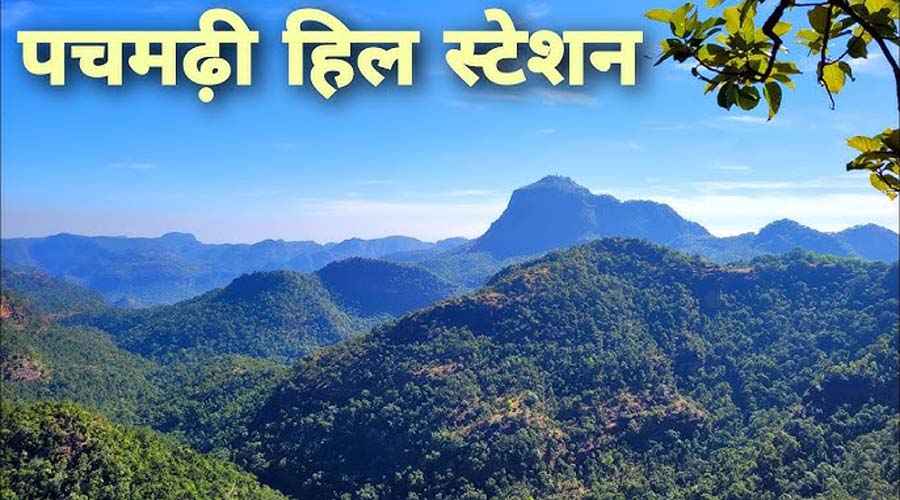Nestled in the verdant Satpura range of Madhya Pradesh, Pachmarhi stands as one of India’s most captivating hill stations. Popularly known as the “Queen of Satpura,” it is celebrated for its scenic landscape, historic caves, cascading waterfalls, and colonial charm. At around 1,067 meters above sea level, Pachmarhi is a serene hill retreat, offering the perfect escape from the hustle and bustle of urban life. With its lush forests, wildlife, and mythological legacy, the region is an ideal destination for nature lovers, adventure enthusiasts, history buffs, and spiritual seekers.
History and Mythology
The origins of Pachmarhi are deeply rooted in both myth and history. The name itself is derived from two Hindi words—Panch meaning five and Marhi meaning caves, referring to the ancient “Pandava Caves.” These caves are believed to have been carved out by the Pandavas during their exile in the Mahabharata era. Archaeological studies, however, suggest that these caves were used by Buddhist monks in later centuries.
During the colonial period, Pachmarhi rose to prominence due to its pleasant climate. The British developed it as a hill cantonment and summer retreat in the 19th century. Traces of colonial architecture, churches, and old bungalows still add to the distinctive aura of the town. This blend of mythology, history, and colonial heritage makes Pachmarhi a cultural as well as natural treasure.
Natural Attractions
The natural beauty of Pachmarhi lies in its diverse landscapes—rolling hills, valleys, waterfalls, and dense forests. Major attractions include:
- Bee Falls: Known as Jamuna Prapat, this waterfall is both picturesque and functional, as it provides drinking water to the town. The crystal-clear cascades and the natural pool beneath attract swimmers and picnickers.
- Apsara Vihar: Also called Fairy Pool, it is a calm and shallow pool fed by a small waterfall, perfect for family outings.
- Dhoopgarh: The highest peak in Madhya Pradesh, Dhoopgarh is famous for its breathtaking sunrise and sunset views. The vantage point offers panoramic scenery of the Satpura ranges.
- Rajat Prapat (Silver Falls): One of India’s highest waterfalls, this stunning cascade drops from a height of 350 feet, resembling a silver streak in the midst of green valleys.
- Pandava Caves: The legendary caves continue to attract visitors who seek to connect with the mythical tales of the Mahabharata.
Adventure and Wildlife
For adventure enthusiasts, Pachmarhi provides opportunities for trekking, camping, and rock climbing. The Satpura National Park, located nearby, is a UNESCO Biosphere Reserve. Rich in flora and fauna, it houses species such as leopards, bison, wild boars, and over 300 species of birds. Safari tours here allow visitors to experience the biodiversity of central India in an immersive way.
Cycling trails and guided treks through waterfalls, caves, and forests also make Pachmarhi a hub for eco-tourism. River-crossing, parasailing, and ropeway activities are gradually being introduced, making it a growing adventure destination.
Spiritual and Cultural Sites
Pachmarhi has significant spiritual allure as well. The Chhota Mahadeo and Bada Mahadeo caves are revered shrines dedicated to Lord Shiva. Pilgrims flock here during the Shivratri festival when the region resonates with devotional fervor. Gupt Mahadeo, a narrow cave temple, offers a thrilling yet spiritual experience for visitors as they navigate its tight rock formations.
Moreover, ancient rock shelters found in the Satpura forests display prehistoric cave paintings dating back thousands of years. These artworks reveal the lifestyle, rituals, and hunting scenes of early humans, making Pachmarhi a unique blend of natural beauty and archaeological fascination.
Colonial Charm
Unlike bustling hill stations, Pachmarhi retains an old-world charm with its colonial churches and relics. The Christ Church, built in the late 19th century, is an architectural gem with stained-glass windows imported from Europe. Old cemeteries, schools, and army heritage spots add a distinct Anglo-Indian flavor to the town’s cultural tapestry. A stroll through its quiet roads amidst British-era bungalows transports visitors back in time.
Local Culture and Cuisine
The local culture of Pachmarhi reflects the tribal traditions of Madhya Pradesh. The Gond and Korku tribes are native to the region, preserving their unique customs, costumes, and dances. Tourists often witness tribal fairs that showcase folk music and dance forms.
On the culinary front, Pachmarhi offers simple yet delightful flavors. Street food like poha-jalebi, samosas, and traditional Madhya Pradesh thalis are popular among tourists. Local eateries and cafes serve both Indian and continental dishes, catering to the mixed crowd that frequents this hill station.
Best Time to Visit Pachmarhi Hill Station
Pachmarhi enjoys a moderate climate throughout the year. The best time to visit is between October and June. The post-monsoon season highlights lush greenery and gushing waterfalls, while winters provide a refreshing climate ideal for sightseeing. Summers are comparatively milder here, making it a safe retreat from the scorching plains of Madhya Pradesh.
Connectivity and Accommodation
Pachmarhi is well-connected by road from Bhopal and Jabalpur. The nearest railway head is Pipariya (located about 47 km away), and the nearest airport is in Bhopal. Jeep safaris, taxis, and buses are easily available to reach the hill station.
The town offers a range of accommodation options—from government guesthouses and budget-friendly hotels to luxury resorts surrounded by nature. Eco-friendly stays and cottages within tribal villages also appeal to travelers seeking a rustic experience.
Conclusion
Pachmarhi hill station is an enchanting destination where history, mythology, and natural splendor converge. Whether it is the misty peaks of Dhoopgarh, the legends of the Pandava Caves, or the serenity of its cascading waterfalls, every corner of Pachmarhi has a story to tell. With its thriving biodiversity, spiritual sites, and colonial heritage, the Queen of Satpura promises a wholesome travel experience for every kind of traveler.
Visiting Pachmarhi is not just a trip to a hill station; it is a journey into timeless landscapes and living traditions that continue to mesmerize visitors year after year.


